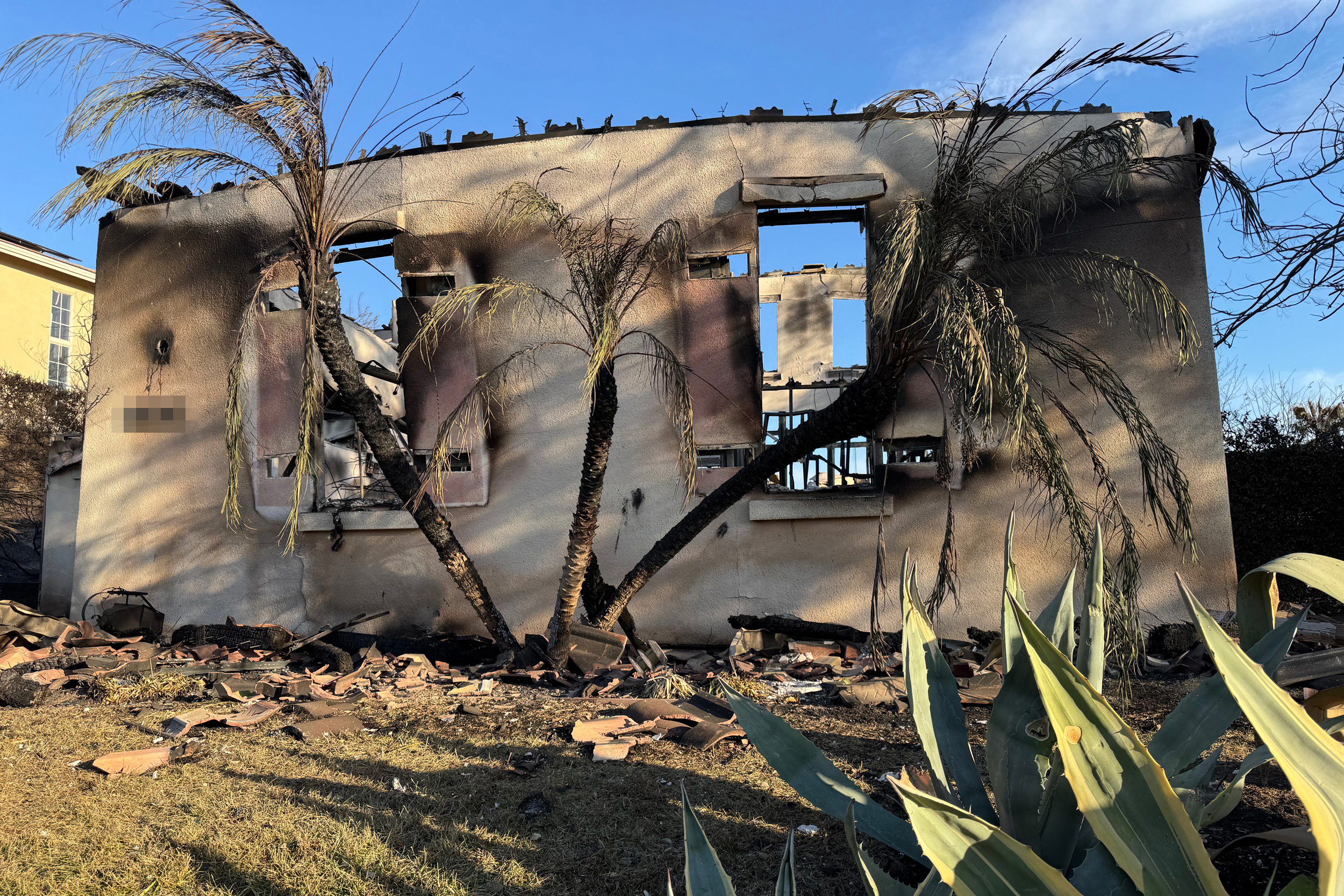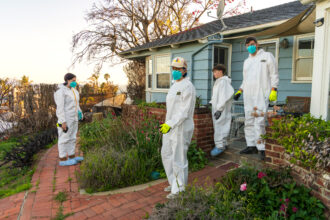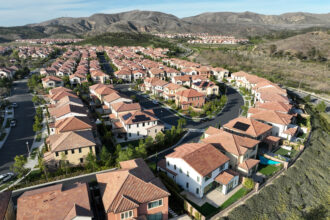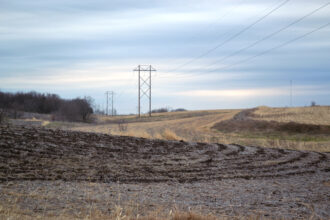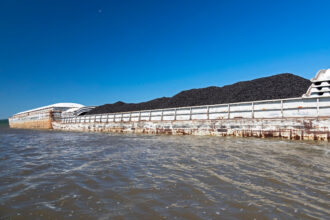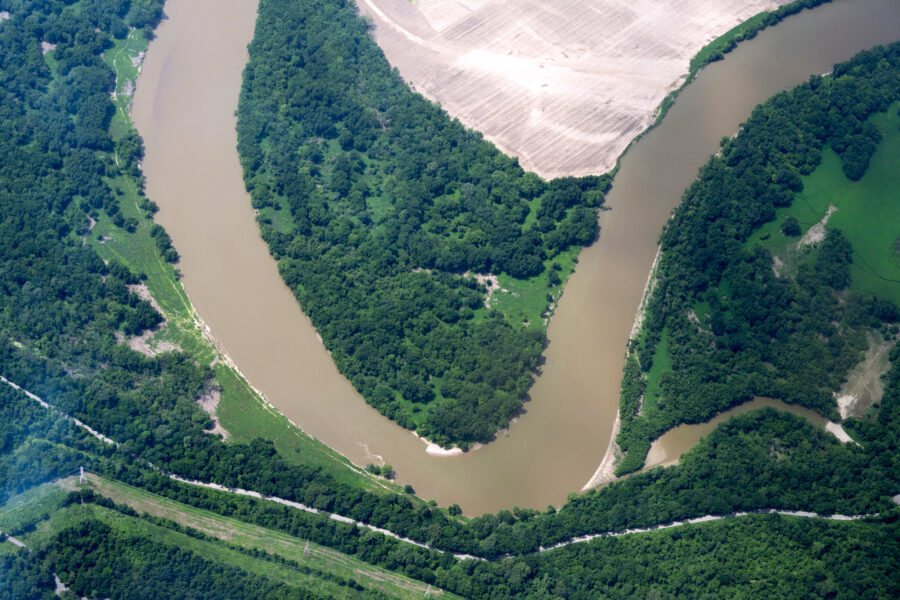After years of delay, California is rushing to finalize its rules requiring a five-foot ember-resistant perimeter around homes in areas of the state facing high wildfire risks.
The science supporting the benefits of keeping this buffer zone, known as “zone zero,” clear of anything likely to catch fire and ignite the side of a building is well established. But as the California Board of Forestry and Fire Protection moves forward, they’re encountering pushback from an unexpected corner.
A handful of scientists involved in fire research have questioned a piece of the proposal that would require removing non-tree vegetation in zone zero, noting that the role of landscaping plants in spreading fires, particularly if they’re hydrated and well-maintained, has not been sufficiently studied to support their complete removal.
“The question isn’t whether zone zero is important because it is,” said Alexandra Syphard, a research ecologist at the Conservation Biology Institute and a wildfire safety advisor to the state’s Office of Energy Infrastructure Safety. “I think the question is, what do you do within that zone?”
Syphard said her work on vegetation modification around homes and factors influencing building loss in fires has been used to argue for and against the proposed zone zero rules. But while her research suggests that there should be no combustible materials within five feet of a house, she said “there is still uncertainty about the role that some irrigated plants may play.”
The uncertainty is fueling pushback from local leaders, residents and environmental groups in Los Angeles arguing that the board’s Zone Zero Regulation Advisory Committee’s draft proposal—which includes a five-foot buffer clear of vegetation except for trees pruned to the rules’ specifications and potted plants under 18 inches tall—could wind up harming tree cover and wildlife habitat unnecessarily.
“There is emerging evidence that trees and shrubs, if properly maintained and watered, may actually provide more ember protection,” said Bryan Vejar, associate director of community forestry at the LA-based nonprofit TreePeople, during a contentious mid-September hearing in Pasadena.
In an email after the meeting, Vejar shared a study showing differences in the flammability index of various species in Southern California. “When it comes to healthy, irrigated, well-maintained vegetation, further research is required to justify blanket removal requirements.”
Unexpected Fuel in a Fiery Debate
The argument is throwing a wrench into the plans for what many fire prevention experts, including fire marshals and fire safe council leaders, say is necessary to reduce the risk of fire spreading from home to home during hot, dry and windy conditions like those that contributed to January’s fires in LA.
“This is new,” said Todd Lando, battalion chief at the Central Marin Fire Department, of the claim that plants can protect homes from embers and that removing them in the name of fire defense could lead to environmental degradation. “It’s catching us off guard because it’s misguided and unfounded.”
California has had rules on its books since the 1960s requiring homeowners in high fire-risk areas to reduce vegetation within 30 feet of their homes to deprive flames running towards structures of fuel. But in the 1990s, research pioneered by now-retired U.S. Forest Service scientist Jack Cohen demonstrated that wind-blown embers, rather than flames, ignite the vast majority of structures lost in wildfires. Studies suggest that sealing gaps in the structure, covering vents with mesh and building with fire-resistant materials are the most effective steps to prevent embers from igniting a house, said Syphard.
But it also helps to keep the first five feet of land surrounding the home clear of dry leaves and grass, mulch, highly-combustible trees and shrubs and other flammable materials, she added. A study published last month in Nature Communications showed that, when combined, these two steps—making structures more resistant to ignitions and limiting the flammable materials around them—could cut losses by half in California fires at the wildland-urban interface, where development meets fire-prone open space.
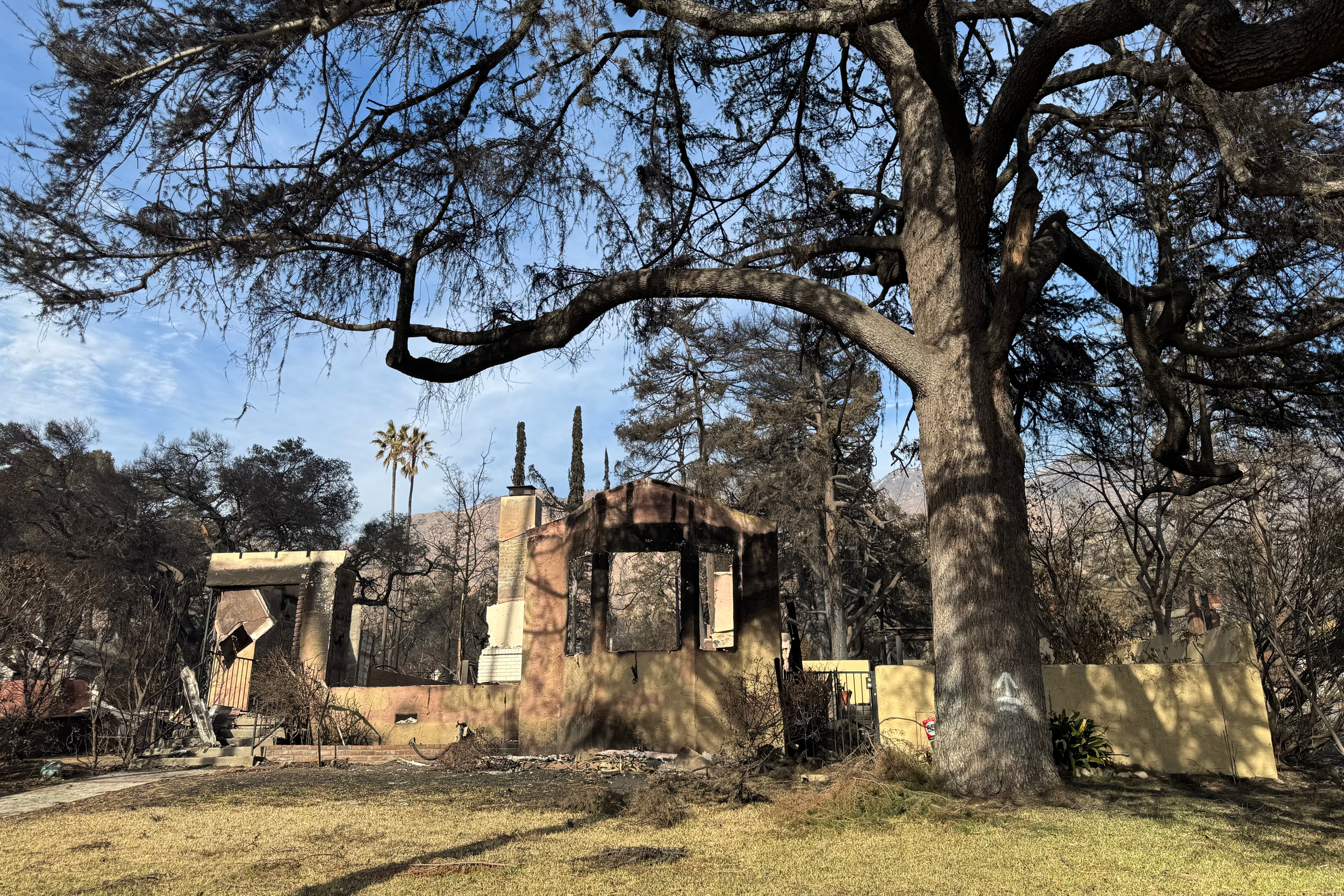
In 2020, the California legislature passed a law directing the Board of Forestry to establish an ember-resistent zone zero for homes in very high fire hazard areas. The board’s work on the regulations lasted well past the 2023 due date, as they struggled to balance the demands of insurance lobbyists and the state fire marshal for a strict noncombustible zone clear of vegetation and the concerns of homeowners worried about the cost of compliance. In February, after the LA fires, Gov. Gavin Newsom ordered them to complete the rules by the end of this year.
No one ever expected a regulation on landscaping to be anything but incendiary in California. The rule would apply to all hazard areas where the state oversees wildfire response and to “very high” hazard areas in local firefighting jurisdictions. That adds up to some 17 percent of structures in the state, including large swaths of LA. Some proposed requirements, such as those to remove lumber piles or replace wood fences that touch homes, are less controversial. But a gap in the scientific literature regarding the flammability of plants has introduced a new element to the debate, which in the past has centered on issues like cost and aesthetics, or, in more conservative parts of the state, the government’s right to meddle in yards.
Can Some Plants Slow, Rather Than Speed, Fires?
As the board floated early draft rules, two wildfire scientists from UC Santa Barbara and San Diego State University published a June op-ed in the Los Angeles Times arguing that “well-maintained plants and trees can help protect homes from wind-blown embers and slow the spread of fire in some cases.”
The op-ed cited anecdotal observations and research, including a 2025 paper from California and a 2018 paper from Australia, that suggest a correlation between plant moisture and building survival in wildfires.
Co-author Max Moritz, a University of California Cooperative Extension wildfire specialist and adjunct environmental science professor at UC Santa Barbara, said that since “there are just so few studies to say anything conclusive,” the state should proceed with caution, especially given the cooling and ecological benefits of urban greenery. “You look at the repercussions of tearing out all this vegetation, and that’s a part of the story that we know the least about. The cooling effect that vegetation has in urban environments, and how that plays out in terms of energy use.”
Lando, the battalion chief who coined the term “zone zero” while developing educational materials in 2018, wrote a rebuttal, arguing that keeping gardens lush and well-maintained enough to resist fire is a fantasy for the vast majority of people, especially during extreme weather conditions. “We have tons of science and tons of real experience showing that these plants, during these red flag warning conditions, dramatically change their characteristics and become much more conducive to burning,” he said on the phone. “That’s the reality that this doesn’t capture.”
The board published an updated FAQ sheet in September, noting that while a hedge may temporarily act as a heat shield, it will likely dry out and burn under sustained exposure to fire, and though embers can appear to be intercepted by plants, they often then fall to the ground, where they ignite dry debris beside a home. Even some moisture-rich succulents can be hazards, they wrote, when embers reach dead material below their green surfaces.
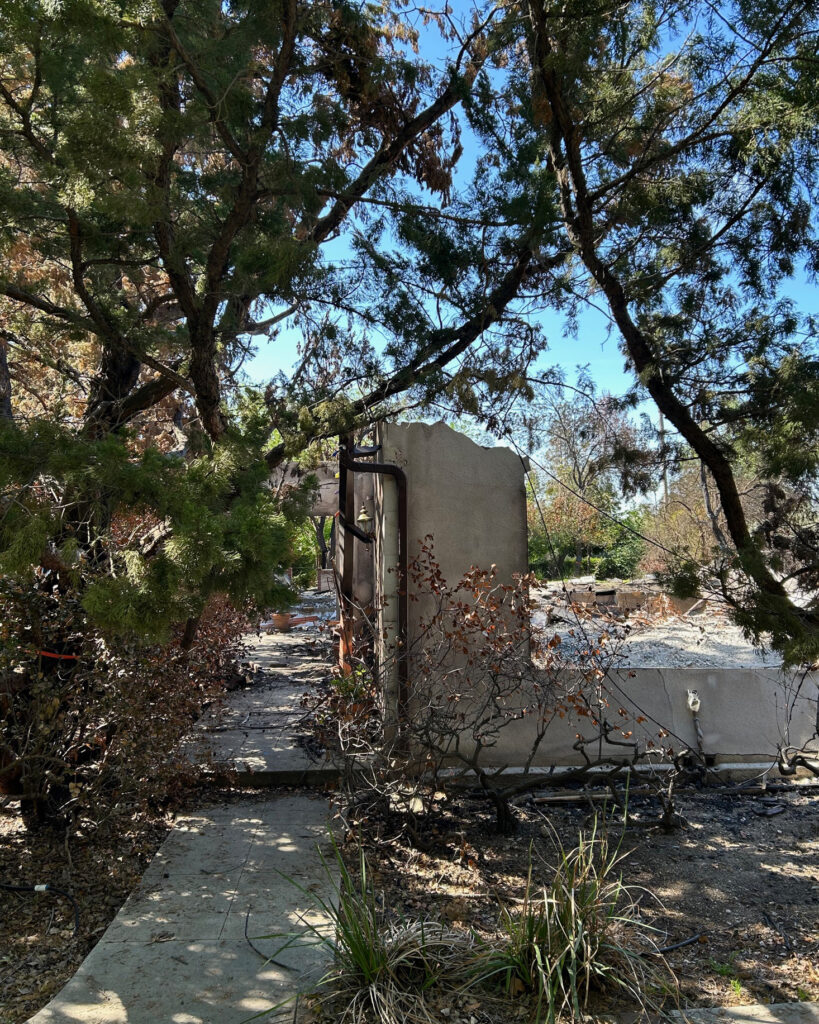
But the rule could require the removal of about 2,000 acres of vegetation across the city, compromising biodiversity and tree cover, LA’s Community Forest Advisory Committee and Fire Department wrote in early September. That’s increased concern among residents and led some high-profile voices to chime in on the side of plants.
“Research and advocacy from our region suggests an evidence-based approach to protect urban neighborhoods in areas with risk of wildfire may include the maintenance of protective and well-maintained greenscapes,” reads a September 17th letter from five progressive LA city council members, which was echoed in a letter by four more council members the next day.
“The science is not a consensus,” said Nurit Katz, chief sustainability officer of UCLA and a commissioner for the Los Angeles Department of Water and Power at a zone zero committee meeting last month in Sacramento. The university now falls in a “very high” hazard zone after California updated its fire hazard maps last year, and Katz is advocating for rules focused on what most agree on—removing dead vegetation, wood fences and mulch—that allow local flexibility for living plants.
Even U.S. Rep. Laura Friedman, who authored the 2020 state law to require zone zero during her time in the California legislature, wrote to the board in July. Friedman noted that her law also requires a companion document “that provides regionally appropriate vegetation management suggestions that preserve and restore native species that are fire resistant or drought tolerant.” Others noted that her law called for the board to create an ember-resistant zone around homes, not the full elimination of anything remotely combustible.
In the Weeds of Wildfire Resilience
Part of the difficulty, according to Yana Valachovic, county director for the UC Cooperative Extension in Humboldt and Del Norte and a technical advisor to the board, is that fire dynamics are incredibly complex and there is no standard method for evaluating the role of plants in zone zero. “Are you evaluating it for a home that has combustible siding? Or for a home that has non-combustible siding, but then maybe has a detail that’s vulnerable? I don’t know how to answer that question in an empirical way, given the complexity of housing arrangements, materials type and maintenance that has or has not occurred,” she said.
This story is funded by readers like you.
Our nonprofit newsroom provides award-winning climate coverage free of charge and advertising. We rely on donations from readers like you to keep going. Please donate now to support our work.
Donate NowValachovic showed a video at the last committee meeting of an Insurance Institute for Business and Home Safety trial where researchers lit a wood pallet on fire 20 feet away from a structure with a well-watered arborvitae beside it. The video illustrated how the plant caught fire in about seven minutes under high wind conditions and spread flames to the building. Arborvitae, like junipers, rosemary and Italian cypress, are some of the more notoriously flammable plants in California gardens. She said the state should develop a testing center to conduct that kind of research in more scenarios and with a wider range of plant species.
In the meantime, she wants the rules to be easy to communicate and reflect the reality that most people won’t have the time or resources to maintain their plants to less flammable standards. “Stick your hand into a row of hedges in your neighborhood and see what you find at the base,” she said. “Ninety-nine percent of the time it’s going to be dry debris…Very few people know how to correctly prune a shrub or up their maintenance regime to not create that situation.”
Valachovic is also emphasizing that the rule will not require the removal of trees. As the rules are currently written, trees in zone zero can remain if their branches are kept ten feet away from chimneys, five feet away from walls and five feet above roofs. Raising the spectre of trees with no branches on one side, the Community Forest Advisory Committee said these requirements would “put trees in decline,” a point board chair Terrence O’Brien said he was unsympathetic to at last month’s meeting. Still, board members discussed a need to clarify language around exemptions to the tree regulations. “Not all vegetation is created equal,” said O’Brien. “Native oaks are probably a little more fire resistant than Italian cypress.” He also called for a list of recommended native landscaping plants from staff that the board could consider.
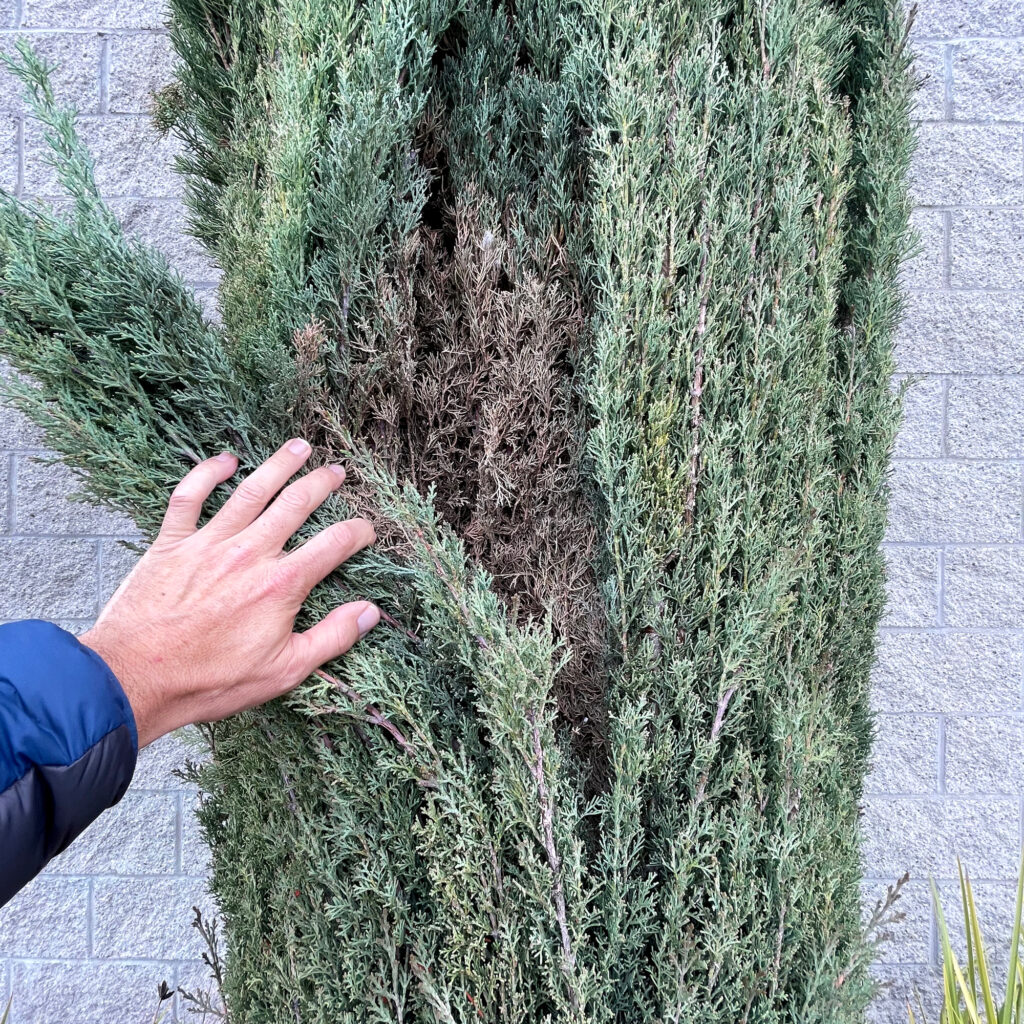
The Board of Forestry is still accepting public comments and will publish an updated zone zero draft rule for the committee to consider by its October 23rd meeting, board executive officer Tony Andersen said in an email. Once the committee approves the rule, the full board can vote to launch the formal rulemaking process, which will include another public comment period. They’re aiming to finalize the regulations in January 2026.
Once complete, the rule will go into effect immediately for new construction and in three years for existing structures. How zone zero regulations would be enforced is not entirely clear, but board members have said their goal is not to penalize Californians but rather to have fire departments work with them to “better understand their risks” and actions they can take to reduce them.
Currently, the rule language allows for authorities to develop alternative practices that take into account local variations like lot sizes and plant ecology as long as they “provide for substantially similar practical effects,” but it’s unclear how those will be defined and assessed.
Several fire marshals and fire safe council members at last month’s hearing called for consistency and simplicity across the state to ease compliance. “Wildfire regulation and enforcement needs clarity, not confusion,” said Laura Blaul, a fellow with the IBHS and a retired fire marshal from Orange County Fire Authority, who asked the board to tighten the provisions that allow for alternatives to coming regulations. Residents and Firewise Community leaders from Berkeley touted the strict zone zero requirements that the city council adopted for the Berkeley Hills this summer, and their alignment with insurance industry standards.
But MySafe:LA director David Barrett, who coordinates fire safe councils in Los Angeles County, argued for more regionally adaptable rules that take into account the density of LA neighborhoods’ populations and emerging research about vegetation in zone zero. He expressed concern that an inflexible law could provide insurance companies, which have funded much of the research behind zone zero, “with a perceived ‘green light’ to cancel or deny coverage to any homeowner who is unable to achieve 100 percent compliance.”
“We’ve been very, very aware of the need to move expeditiously on this, given what we have experienced in California regarding wildfire in our communities,” said O’Brien. “At the same time, there’s an overriding consideration about coming up with regulations that are going to be as effective as possible, and effectiveness is influenced by public acceptance.”
But he acknowledged that “we’re not going to craft a package that everybody agrees with.”
Correction: Todd Lando, battalion chief at the Central Marin Fire Department, coined the term “zone zero” in 2018, not the 1990s.
About This Story
Perhaps you noticed: This story, like all the news we publish, is free to read. That’s because Inside Climate News is a 501c3 nonprofit organization. We do not charge a subscription fee, lock our news behind a paywall, or clutter our website with ads. We make our news on climate and the environment freely available to you and anyone who wants it.
That’s not all. We also share our news for free with scores of other media organizations around the country. Many of them can’t afford to do environmental journalism of their own. We’ve built bureaus from coast to coast to report local stories, collaborate with local newsrooms and co-publish articles so that this vital work is shared as widely as possible.
Two of us launched ICN in 2007. Six years later we earned a Pulitzer Prize for National Reporting, and now we run the oldest and largest dedicated climate newsroom in the nation. We tell the story in all its complexity. We hold polluters accountable. We expose environmental injustice. We debunk misinformation. We scrutinize solutions and inspire action.
Donations from readers like you fund every aspect of what we do. If you don’t already, will you support our ongoing work, our reporting on the biggest crisis facing our planet, and help us reach even more readers in more places?
Please take a moment to make a tax-deductible donation. Every one of them makes a difference.
Thank you,


